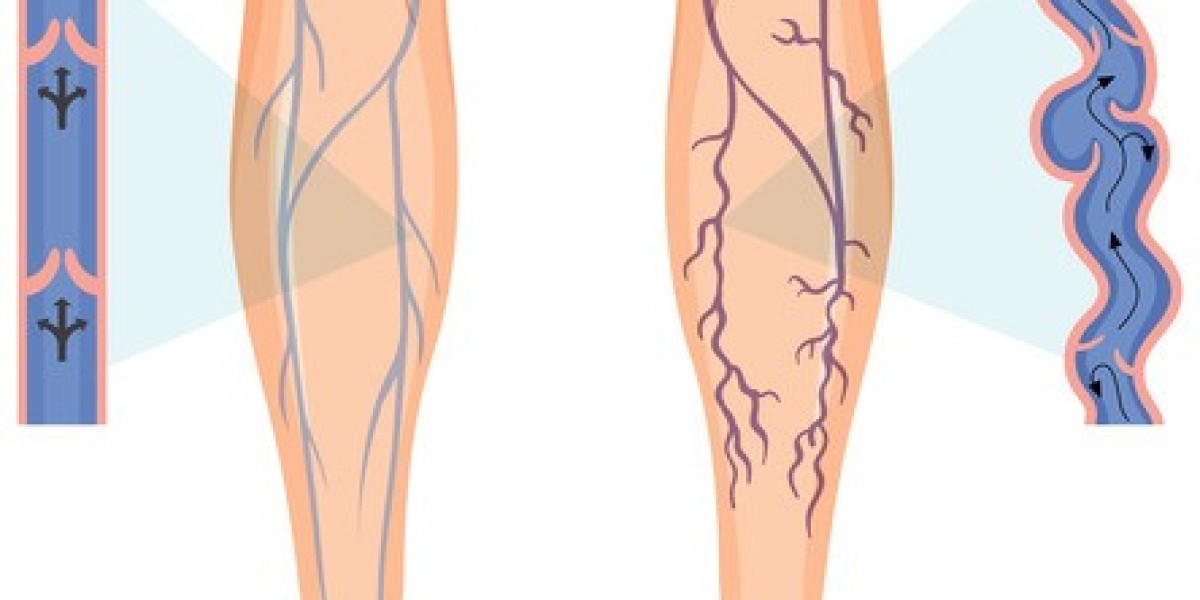Introduction
Varicose veins are a common vascular issue that affect millions of people worldwide. They appear as enlarged, twisted veins just beneath the skin’s surface, most commonly on the legs. While they may seem like a cosmetic concern at first, early-stage varicose veins can cause discomfort, swelling, and heaviness if left untreated. The good news is that early detection and timely treatment can prevent complications and restore healthy circulation.
What Are Varicose Veins?
Veins are responsible for returning blood to the heart. Inside them are small valves that open and close to maintain one-way blood flow. When these valves weaken or fail, blood begins to flow backward and collect within the veins. This buildup increases pressure, causing the veins to stretch and become visible as varicose veins. The condition is more likely to develop in the legs due to the constant effect of gravity on blood flow.
Recognizing Early Signs and Symptoms
How to Identify the Early Stages
The initial symptoms of varicose veins are often subtle but can worsen over time. Paying attention to early signs helps you seek care before the condition progresses.
Fine blue or purple veins appearing under the skin
Bulging or rope-like veins on the legs
Leg heaviness, aching, or fatigue
Swelling around ankles or calves
Burning, itching, or tingling sensations
Dryness or discoloration of the skin near affected areas
Common Causes and Risk Factors
Varicose veins develop due to a combination of lifestyle, genetics, and other health factors.
Major Contributing Factors
Family history: Genetic tendency for weak vein valves
Age: Ageing naturally weakens veins and valves
Gender: Hormonal fluctuations make women more prone
Pregnancy: Increased blood flow and pressure on veins
Obesity: Added body weight increases pressure on leg veins
Sedentary lifestyle: Prolonged sitting or standing limits circulation
Why Early Treatment Is Crucial
Treating varicose veins early prevents them from becoming more severe. If ignored, they can lead to skin thickening, ulcers, or even clot formation. Early medical care not only relieves discomfort but also improves appearance and reduces the risk of long-term complications.
Preventive Care and Lifestyle Tips
Simple Habits to Protect Your Veins
Incorporate regular physical activity such as walking or yoga
Avoid standing or sitting for too long — move around frequently
Elevate your legs while resting to reduce swelling
Maintain a balanced diet and healthy body weight
Wear compression stockings if prescribed
Avoid tight clothing that restricts blood flow
When to Seek Medical Advice
If you notice persistent pain, swelling, or visible changes in your leg veins, it’s best to consult a vascular specialist for evaluation and guidance on next steps.
Treatment Options for Varicose Veins
Non-Surgical Management
For mild varicose veins, conservative measures such as compression therapy, exercise, and leg elevation are often sufficient to relieve symptoms and prevent worsening.
Advanced Minimally Invasive Treatments
When conservative methods are not enough, advanced techniques like Radiofrequency Ablation (RFA) offer highly effective results. RFA uses controlled heat energy to seal off the affected vein, allowing blood to reroute through healthier ones. The procedure is safe, minimally invasive, and allows patients to resume normal activities quickly.
Importance of Expert Diagnosis
Every patient’s condition is unique, and proper diagnosis plays a key role in selecting the right treatment. Through advanced imaging like ultrasound, specialists can accurately identify which veins are affected and design a personalized treatment plan.
About Dr Arvind Nanda
Dr Arvind Nanda is a distinguished interventional and endovascular radiologist with extensive experience in treating vascular disorders, including varicose veins. He specializes in minimally invasive procedures such as radiofrequency ablation, ensuring safe, precise, and lasting results. Known for his patient-centered approach, Dr Nanda combines modern technology with compassionate care to deliver exceptional outcomes. His focus on accurate diagnosis, gentle techniques, and quick recovery makes him one of the most trusted specialists for varicose vein treatment.






